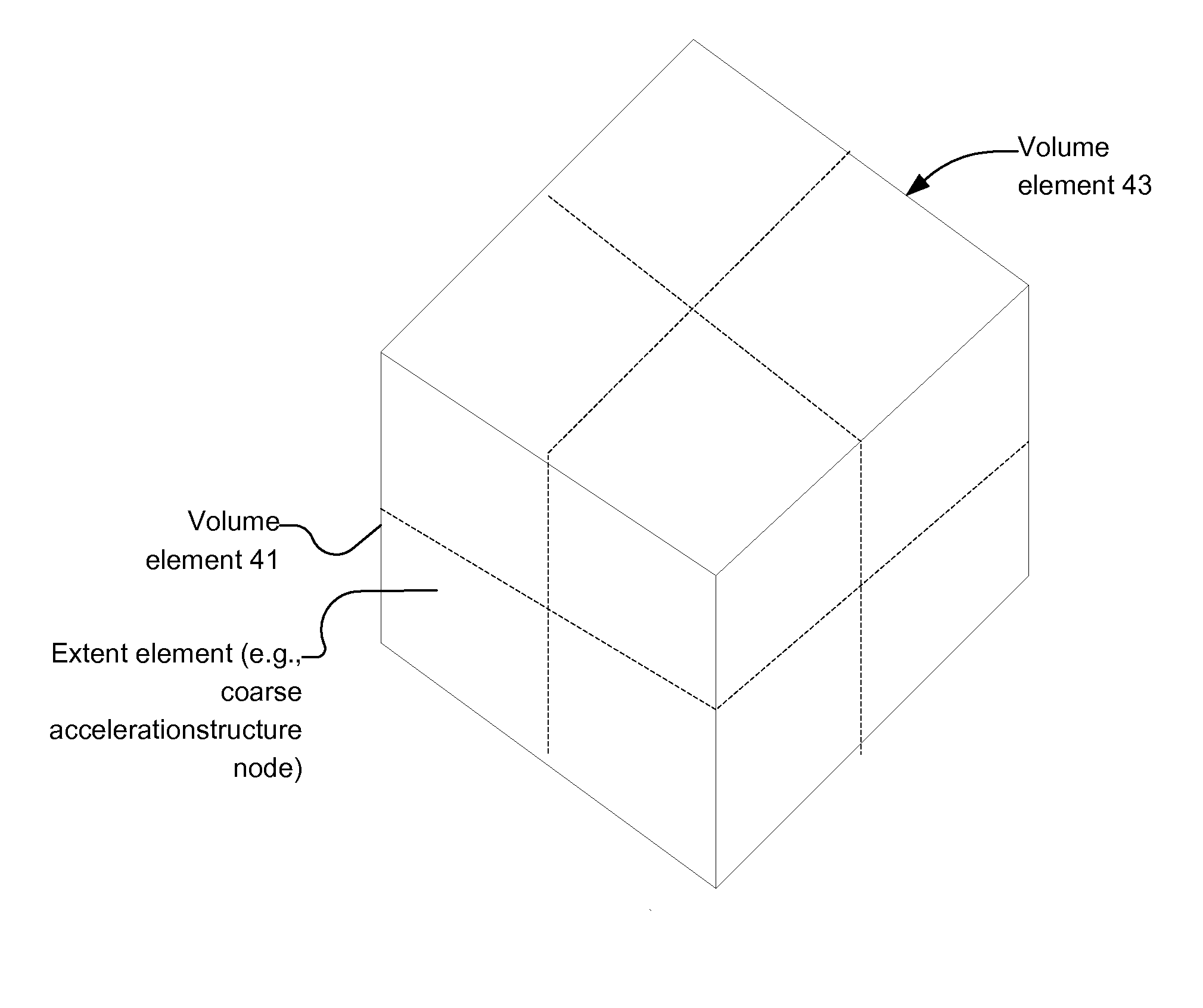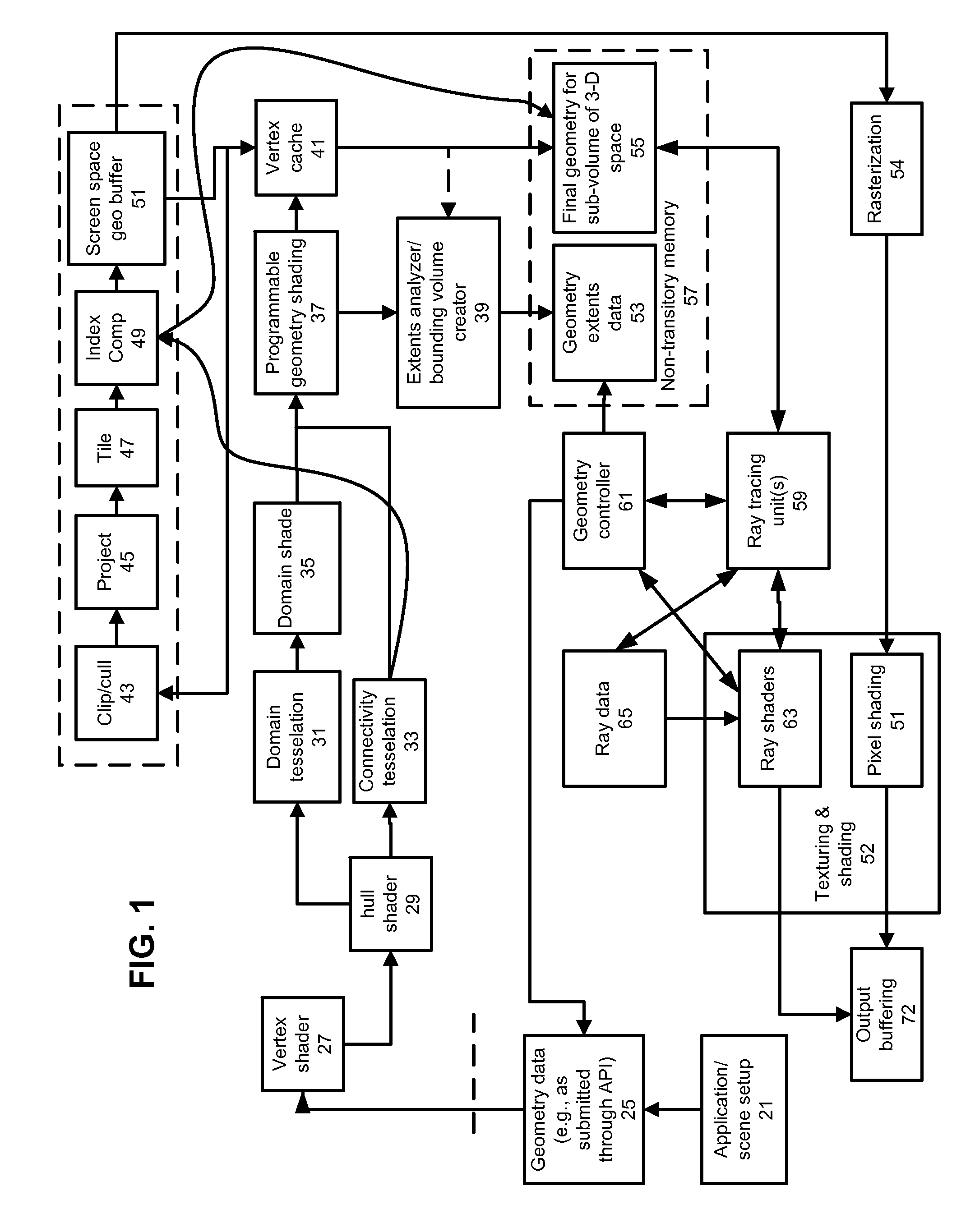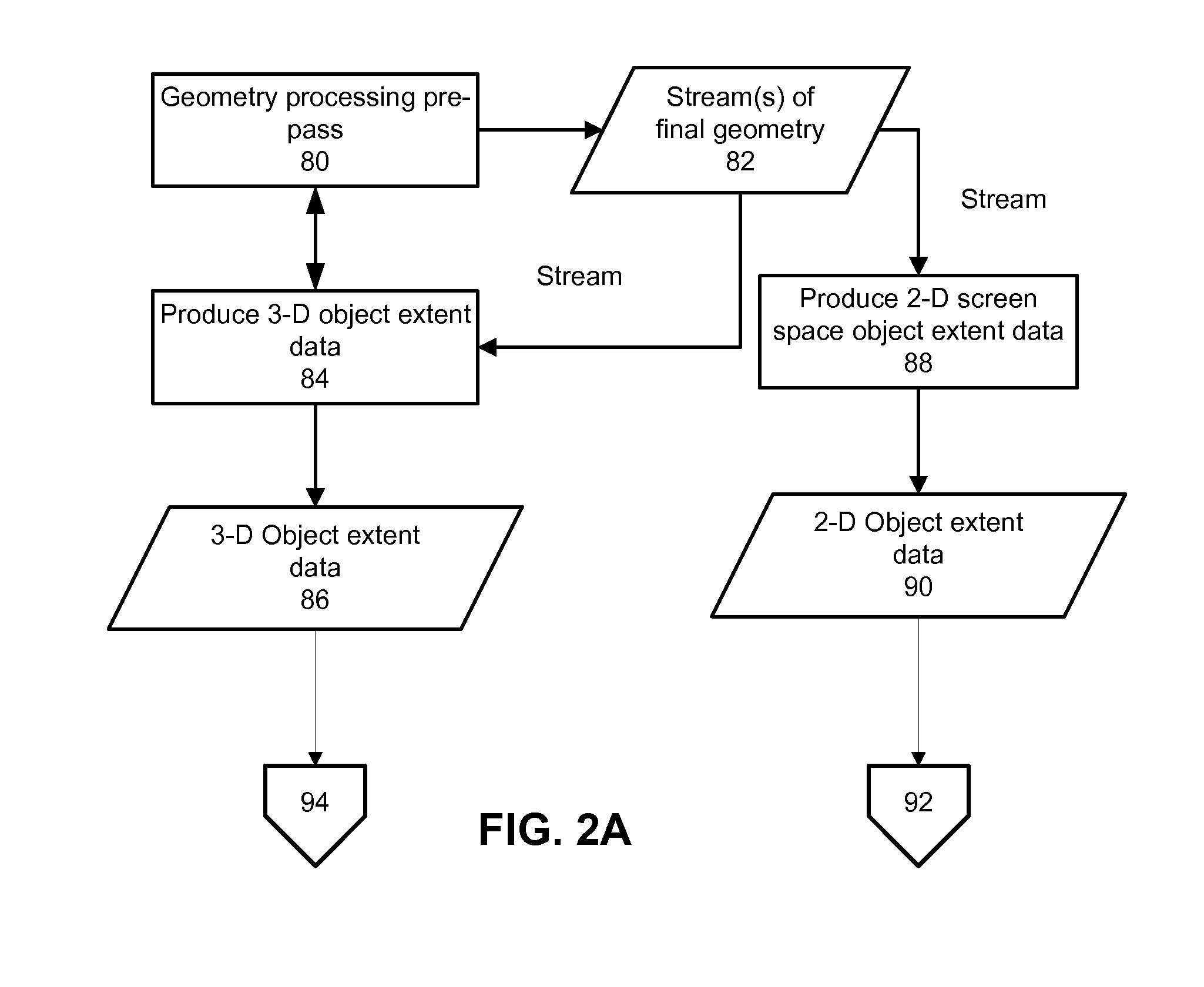On Demand Geometry and Acceleration Structure Creation
a technology of acceleration structure and geometry, applied in the field of rendering system, can solve problems such as high complexity and physical accuracy of images
- Summary
- Abstract
- Description
- Claims
- Application Information
AI Technical Summary
Benefits of technology
Problems solved by technology
Method used
Image
Examples
Embodiment Construction
[0039]Techniques to reduce an amount of memory required to represent a definition of the surface of an object include specifying surfaces of objects as patches that have control points, which can be used to produce vertexes of primitives. Additionally, vertexes of primitives can be used as input to tessellation and to geometry shaders or displacement engines that can amplify a number of primitives by dicing a larger primitive into smaller ones, or otherwise deform geometry so that an extent of geometry after these further geometry operations is different from an original extent.
[0040]In an unconstrained memory resource environment, it may be acceptable to simply produce final geometry for an entire 3-D scene, and store it in a fast Random Access Memory. However, in a computing environment in which fast memory resources are constrained, it may be impossible or undesirable to allocate enough memory to store such data.
[0041]The following relates to approaches for reducing a memory foot...
PUM
 Login to View More
Login to View More Abstract
Description
Claims
Application Information
 Login to View More
Login to View More - R&D
- Intellectual Property
- Life Sciences
- Materials
- Tech Scout
- Unparalleled Data Quality
- Higher Quality Content
- 60% Fewer Hallucinations
Browse by: Latest US Patents, China's latest patents, Technical Efficacy Thesaurus, Application Domain, Technology Topic, Popular Technical Reports.
© 2025 PatSnap. All rights reserved.Legal|Privacy policy|Modern Slavery Act Transparency Statement|Sitemap|About US| Contact US: help@patsnap.com



